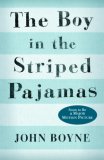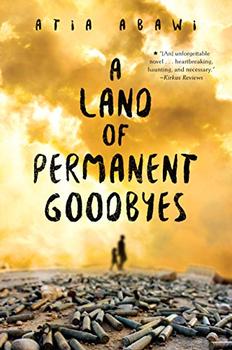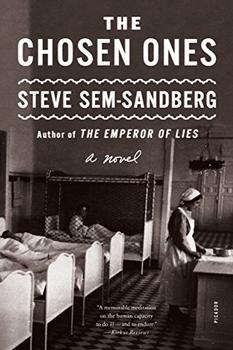Summary | Excerpt | Reading Guide | Reviews | Beyond the book | Read-Alikes | Genres & Themes | Author Bio

A Fable
by John BoyneThe Boy In The Striped Pajamas was published in the UK early
in 2006, where it has received very positive reviews and much
publicity, becoming one of those relatively rare books that
crosses over from its intended market (teenagers) to be read widely by
adults as well. It was published in hardcover in the USA
in September 2006, and is just now out in paperback.
Boyne tells the story
of Bruno, a 9-year-old boy living in Berlin in 1943 (the book
jacket description pegs it as 1942, but from various references in the
book it seems more likely to be 1943) who finds his
comfortable life upturned when his father is commanded by the
"Fury" to take a new job at a place called "Out-With", where the
lonely Bruno discovers a secret friend exactly his age - a boy
called Shmuel who wears striped pajamas and lives on the other
side of the fence.
The Boy In The Striped Pajamas is presented as a fable,
flagging up front that one is expected to disengage ones normal
sense of reality and accept the story as given, but in this
instance, when dealing with such an emotive, well recorded and
historically recent subject as the Holocaust, this is difficult
to do. Everything hinges on the reader accepting
Bruno's overwhelming naivety at face value. Is it
really credible that Bruno, who lives and goes to school
in Berlin and is the son of a senior SS officer, is oblivious to the war, and doesn't know who
Hitler is, or what a Jew is - but in other respects is both observant and intelligent? I don't think so!
When his family arrive at Aushwitz, Bruno and his 12-year-old-sister are conveniently the
only children in the vicinity, other than those on the other
side of the fence. This again stretches credibility
because historical records show that about 6,000 SS officers were posted at
Auschwitz, so it seems extremely unlikely that other children
would not have been around. Then there is the issue of how
Bruno could possibly have talked with his friend on the
other side of the fence for months without, firstly, being seen, and secondly, ever comprehending that Shmuel is starving (he absentmindedly brings him food from
time to time but usually ends up eating most of it on the way).
Not to mention the inconvenient detail that by 1943 most young children arriving at the
camps were gassed on arrival.
On the other hand, Boyne hits a few powerful notes - such
as Bruno's father's response to his question about the people
inside the fence - "they're not people at all Bruno"; and his
mother's comment that "we don't have the luxury of thinking".
In short, as a fable, this is a powerful tale, and if you
can read it as such all well and good (I can't); but as a vehicle for
explaining the defining tragedy of the 20th century to young
people, let alone adults, it falls short.
![]() This review was originally published in The BookBrowse Review in September 2006, and has been updated for the
November 2007 edition.
Click here to go to this issue.
This review was originally published in The BookBrowse Review in September 2006, and has been updated for the
November 2007 edition.
Click here to go to this issue.

If you liked The Boy in the Striped Pajamas, try these:

by Atia Abawi
Published 2019
Narrated by Destiny, this heartbreaking - and timely - story of refugees escaping from war-torn Syria is masterfully told by a foreign news correspondent who experienced the crisis firsthand.

by Steve Sem-Sandberg
Published 2017
Passionately serious, meticulously researched, and deeply profound, this extraordinary and dramatic novel bears witness to oppression and injustice, and offers invaluable and necessary insight into an intolerable chapter in Austria's past.
Your guide toexceptional books
BookBrowse seeks out and recommends the best in contemporary fiction and nonfiction—books that not only engage and entertain but also deepen our understanding of ourselves and the world around us.